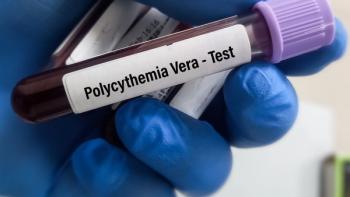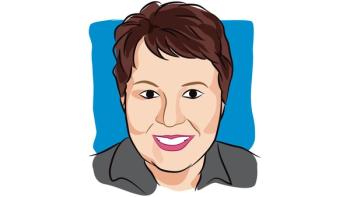
Facing Cancer as an AYA and Navigating Fertility Preservation Choices
Carly Stafford Dixon, discusses how she approached fertility preservation after her diagnosis of primary mediastinal b-cell lymphoma, a rare blood cancer.
A cancer diagnosis in adolescents and young adults (AYA) presents many unique challenges that will follow them even after treatment, with fertility preservation presenting as a concern in treatment planning and long-term survivorship.
According to the American Cancer Society, for a woman (or individual with female reproductive organs), a cancer diagnosis and treatment can affect your ability to have a child, in turn, making it important to connect with your team to discuss which treatment plan is right for you based on individual fertility concerns.
In an interview with CURE, Carly Stafford Dixon, a survivor of primary mediastinal b-cell lymphoma (a rare type of blood cancer) and a patient advocate, discussed how she approached fertility preservation after her diagnosis of primary mediastinal b-cell lymphoma, a rare blood cancer. She also expanded on
Transcript:
I had my CT scan that showed a very large tumor in my chest, later described as the size of a giant yam, or a non-award-winning melon — you know, like it wouldn't win any county awards, but quite large and growing fast. My oncologist said, “If this thing is slow-growing, it's been there about five months. If it's fast-growing, it probably started growing a month ago,” which was a shock because this thing was huge.
I went into the hospital on a Friday night, and immediately we started all kinds of testing to see what was going on. Only maybe the second or third day, when there was a real chance that this was going to be cancer, I was so sure that I ordered myself a nice blanket. I was like, “I'm going to get ready for treatment.” I was talking to my older sister, a PA, who has been so helpful, and she said, “Make sure to talk to your doctor about fertility preservation.” At the time, I didn't have an oncologist yet because I wasn't diagnosed yet, so I just had an internist who was awesome, but that fertility preservation was never brought up to me. It was something that I had to ask about.
He talked to me about some options, and one of them that I heard about from this internist was there's a shot you can get. It essentially makes your eggs ready for retrieval in 30 to 36 hours. I was thinking, “Okay, that's a good option if I don't have time for the classic fertility treatment with the hormone shots and everything.” When I was diagnosed — so again, went in on a Friday, was diagnosed on a Monday — I asked the internist who came out to deliver the news, “Can I get that shot? Can we?” I figured time was of the essence. If this thing had only been growing for a month, if I waited to do the traditional egg retrieval process, the tumor would be giant, so I asked him, “Can we, can I get that shot so that hopefully we can get some eggs out?” And he said, “Unfortunately, with this type of cancer and with the rate your tumor is growing, if you don't start chemo tomorrow, you've got two weeks to live at most,” because this tumor was just shoving organs out of the way.
My heart was completely displaced; it was crushing a left lung. As that tumor gets bigger, a lot of patients with this type of cancer, it starts to push on their superior vena cava and their heart, which causes SVC syndrome. People run a risk of suffocating and having vital organs damaged. All this to say, he said, “You don't really have time for that, not even the 30-hour one.” So I said, “Okay, what are my options?” Having a family is important to me and to my husband, and he said, “Here's a shot that we can give you about once a month called Lupron.” Lupron put me into temporary early menopause. I would get the shot every so often, and it essentially shuts down your ovaries. That was my only option, and I took that option.
Transcript has been edited for clarity and conciseness.
For more news on cancer updates, research and education, don’t forget to





